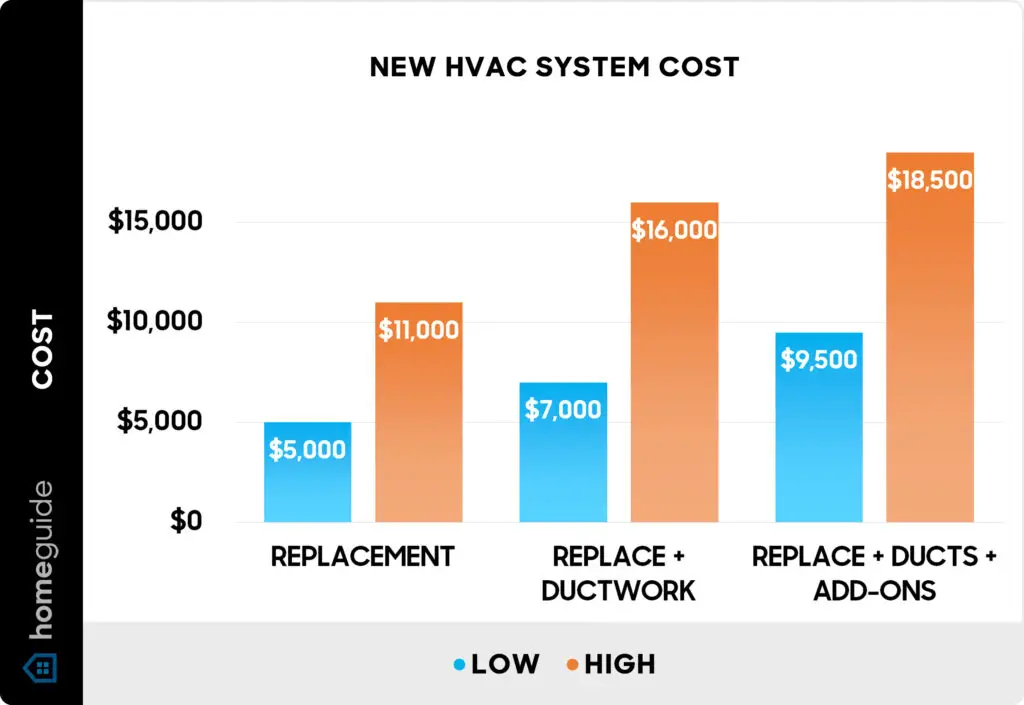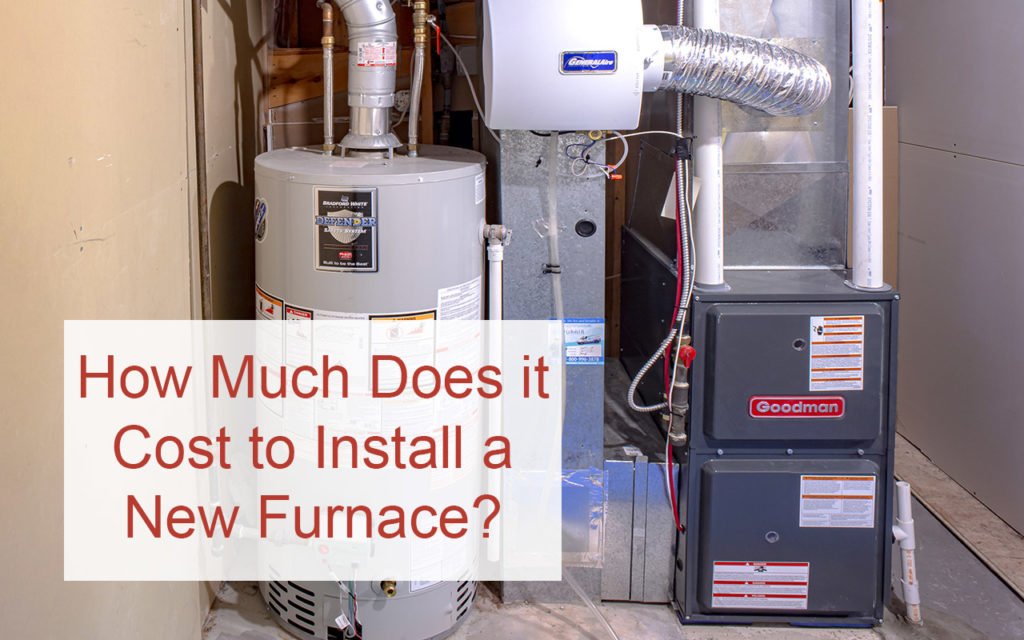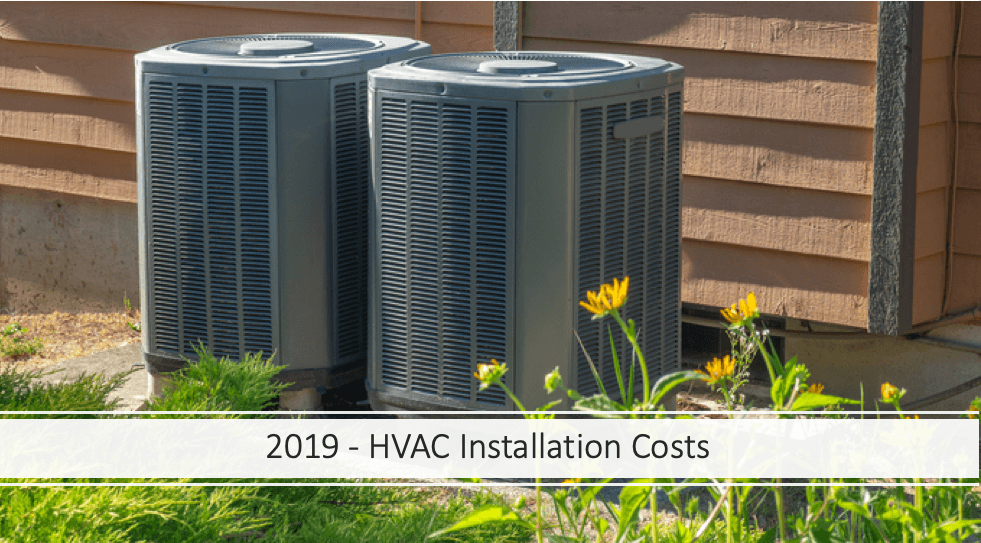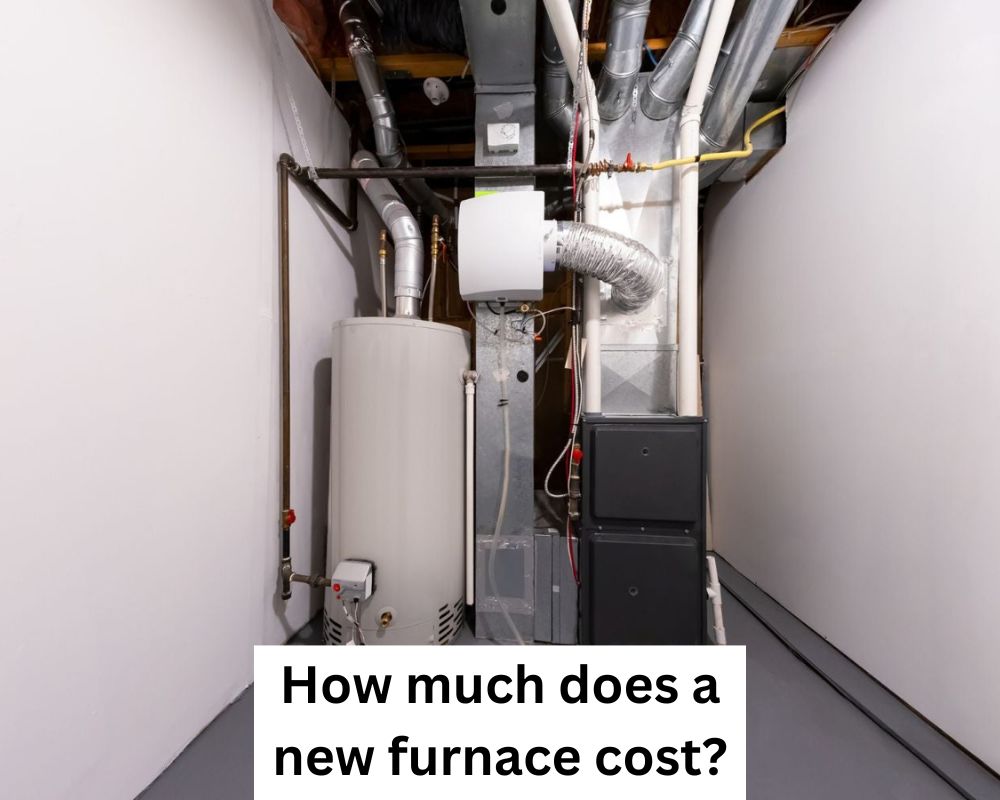How Much To Install A New Furnace And Ac

Understanding the Costs of New Furnace and AC Installation
Replacing your furnace and air conditioner is a significant investment for any homeowner or property manager. Understanding the factors that influence the overall cost can help you make informed decisions, budget effectively, and choose the right system for your needs. This article breaks down the various cost components, efficiency considerations, and lifespan expectations associated with new HVAC installations.
Key Cost Factors:
Several elements contribute to the total expense of installing a new furnace and AC system. These can be broadly categorized into equipment costs, labor charges, and additional expenses.
Equipment Costs:
The price of the furnace and air conditioner itself is a major factor. This is influenced by several sub-factors:
- Size (BTU/h and Tonnage): Larger homes or buildings require more powerful systems. Furnace size is measured in British Thermal Units per hour (BTU/h), indicating the amount of heat the furnace can produce. Air conditioner size is measured in tons, where one ton equals 12,000 BTU/h of cooling capacity. A 2,000 sq ft home in a moderate climate might require a 60,000 BTU/h furnace and a 2.5-ton AC unit, whereas a larger home in a hotter climate could need significantly more.
- Efficiency (AFUE and SEER): AFUE, or Annual Fuel Utilization Efficiency, measures a furnace's efficiency in converting fuel to heat. Higher AFUE ratings (e.g., 95%+) mean less wasted fuel. Similarly, SEER, or Seasonal Energy Efficiency Ratio, measures an air conditioner's cooling efficiency. Higher SEER ratings (e.g., 18+) indicate greater energy savings. More efficient systems generally have a higher upfront cost but offer long-term savings on utility bills.
- Features and Technology: Advanced features like variable-speed blowers (in furnaces), multi-stage compressors (in AC units), and smart thermostats can increase comfort and efficiency but also raise the initial cost. For example, a furnace with a modulating gas valve can adjust its heat output in small increments, providing more consistent temperatures and reducing energy consumption.
- Brand Reputation: Well-known and reputable brands often command a premium price due to their reliability and performance. Brands like Carrier, Trane, and Lennox are known for their high-quality products.
Labor Charges:
Installation labor costs vary based on location, the complexity of the installation, and the contractor's rates. Factors influencing labor costs include:
- System Complexity: Replacing an existing system in the same location is generally less expensive than installing a new system where ductwork or electrical modifications are required.
- Ductwork Modifications: If your existing ductwork is damaged, improperly sized, or leaking, it may need to be repaired or replaced, adding to the overall cost.
- Electrical Work: Older homes may require electrical upgrades to accommodate the new HVAC system's power requirements. This can include new wiring, circuit breakers, or a dedicated electrical panel.
- Permits and Inspections: Many jurisdictions require permits and inspections for HVAC installations to ensure code compliance. These fees contribute to the overall cost.
- Contractor Experience and Overhead: Experienced and licensed HVAC contractors typically charge higher rates, but they also offer greater assurance of quality workmanship and adherence to safety standards.
Additional Expenses:
Beyond the equipment and labor, several other costs can contribute to the final price:
- Thermostat: A new programmable or smart thermostat can optimize energy usage and improve comfort. Smart thermostats offer features like remote control, learning capabilities, and integration with other smart home devices.
- Refrigerant Lines: Replacing or upgrading refrigerant lines may be necessary, especially if the existing lines are damaged or incompatible with the new AC unit.
- Condensate Drain Line: Ensuring proper condensate drainage is crucial to prevent water damage and mold growth. Upgrading or rerouting the drain line may be required.
- Filters: While often overlooked, high-quality air filters improve air quality and protect the HVAC system from dust and debris. Consider the cost of replacement filters when budgeting for a new system.
- Removal and Disposal of Old Equipment: Most contractors will include the cost of removing and disposing of your old furnace and AC unit in their estimate.
Cost Estimates and Examples:
Providing precise cost figures is challenging due to regional variations and specific installation requirements. However, the following examples offer a general idea of what you might expect to pay:
- Basic Furnace and AC Replacement: Replacing an existing, similarly sized furnace (80% AFUE) and AC unit (13 SEER) in a 1,500 sq ft home could range from $5,000 to $8,000, including equipment and installation.
- Mid-Range Furnace and AC Upgrade: Upgrading to a more efficient furnace (95% AFUE) and AC unit (16 SEER) in a 2,000 sq ft home could cost between $8,000 and $12,000.
- High-Efficiency Furnace and AC System: Installing a top-of-the-line, high-efficiency furnace (98% AFUE) and AC unit (20+ SEER) with advanced features in a 2,500 sq ft home could range from $12,000 to $20,000 or more.
These are just estimates. Always obtain multiple quotes from licensed HVAC contractors to get a more accurate assessment of your specific needs and costs.
Efficiency Ratings and Long-Term Savings:
Investing in a more efficient HVAC system can significantly reduce your energy bills over its lifespan. Consider the following:
- AFUE (Furnace Efficiency): A furnace with 95% AFUE wastes only 5% of the fuel it consumes, compared to a furnace with 80% AFUE, which wastes 20%. This difference can translate to substantial savings on heating costs, especially in colder climates.
- SEER (AC Efficiency): A higher SEER rating means your air conditioner will use less electricity to produce the same amount of cooling. Upgrading from a 13 SEER unit to a 16 SEER unit can reduce your cooling costs by 20% or more.
- Energy Star Certification: Look for the Energy Star label when choosing a new furnace and AC unit. Energy Star certified products meet strict energy efficiency guidelines set by the EPA, ensuring optimal performance and savings.
Calculate the payback period for a more efficient system by comparing the upfront cost difference to the estimated annual energy savings. A longer payback period may be acceptable if you value environmental benefits or plan to stay in your home for many years.
Lifespan Considerations:
A well-maintained furnace typically lasts 15-20 years, while an air conditioner lasts 10-15 years. Factors affecting lifespan include:
- Regular Maintenance: Schedule annual maintenance inspections and tune-ups to keep your system running efficiently and prevent costly repairs.
- Air Filter Replacement: Replace air filters regularly (every 1-3 months) to ensure proper airflow and prevent dust buildup, which can damage the system.
- Proper Sizing: An improperly sized system will work harder and wear out faster. Ensure your new system is appropriately sized for your home or building.
- Climate Conditions: Extreme temperatures and humidity can shorten the lifespan of HVAC equipment.
Consider purchasing an extended warranty to protect your investment and provide peace of mind.
Choosing the Right HVAC Contractor:
Selecting a qualified and reputable HVAC contractor is crucial for a successful installation. Consider the following:
- License and Insurance: Verify that the contractor is licensed and insured in your state or locality.
- Experience and Expertise: Choose a contractor with a proven track record and experience installing the type of system you are considering.
- References and Reviews: Ask for references from past customers and check online reviews to gauge the contractor's reputation.
- Detailed Estimates: Obtain written estimates from multiple contractors, detailing the scope of work, equipment specifications, and total cost.
- Warranty Information: Understand the warranty coverage offered by the contractor and the manufacturer.
Conclusion:
Installing a new furnace and AC unit is a significant investment that requires careful planning and research. By understanding the key cost factors, efficiency ratings, and lifespan considerations, you can make informed decisions and choose the right system for your needs and budget. Remember to obtain multiple quotes from qualified HVAC contractors and prioritize quality installation to ensure long-term performance and energy savings. Proper maintenance is key to extend the life of your HVAC equipment. Investing in quality equipment and professional installation will deliver comfort and cost savings for years to come. Consider federal tax credits or local rebates to offset some of the initial investment.










